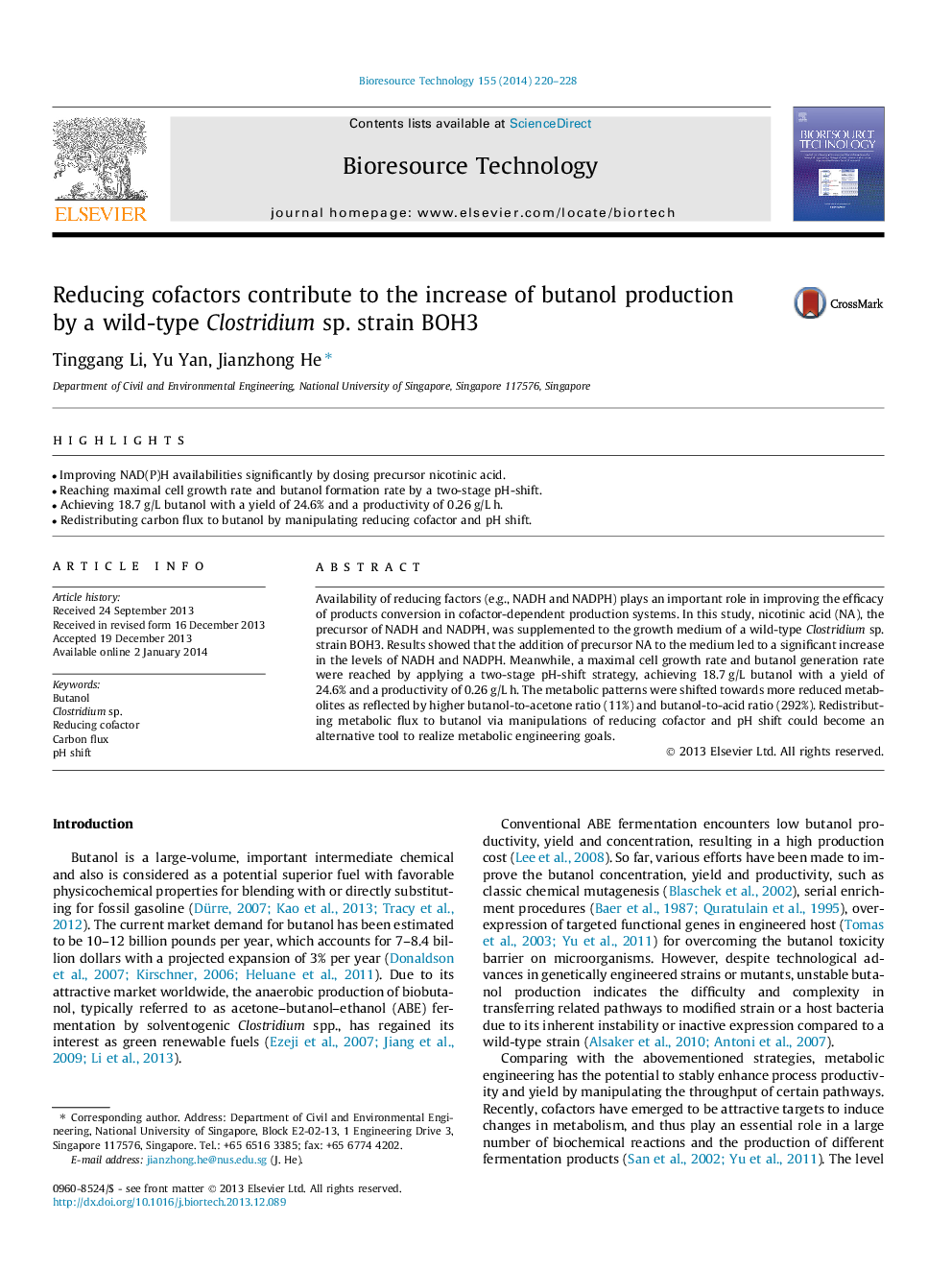| کد مقاله | کد نشریه | سال انتشار | مقاله انگلیسی | نسخه تمام متن |
|---|---|---|---|---|
| 680976 | 1459988 | 2014 | 9 صفحه PDF | دانلود رایگان |

• Improving NAD(P)H availabilities significantly by dosing precursor nicotinic acid.
• Reaching maximal cell growth rate and butanol formation rate by a two-stage pH-shift.
• Achieving 18.7 g/L butanol with a yield of 24.6% and a productivity of 0.26 g/L h.
• Redistributing carbon flux to butanol by manipulating reducing cofactor and pH shift.
Availability of reducing factors (e.g., NADH and NADPH) plays an important role in improving the efficacy of products conversion in cofactor-dependent production systems. In this study, nicotinic acid (NA), the precursor of NADH and NADPH, was supplemented to the growth medium of a wild-type Clostridium sp. strain BOH3. Results showed that the addition of precursor NA to the medium led to a significant increase in the levels of NADH and NADPH. Meanwhile, a maximal cell growth rate and butanol generation rate were reached by applying a two-stage pH-shift strategy, achieving 18.7 g/L butanol with a yield of 24.6% and a productivity of 0.26 g/L h. The metabolic patterns were shifted towards more reduced metabolites as reflected by higher butanol-to-acetone ratio (11%) and butanol-to-acid ratio (292%). Redistributing metabolic flux to butanol via manipulations of reducing cofactor and pH shift could become an alternative tool to realize metabolic engineering goals.
Journal: Bioresource Technology - Volume 155, March 2014, Pages 220–228